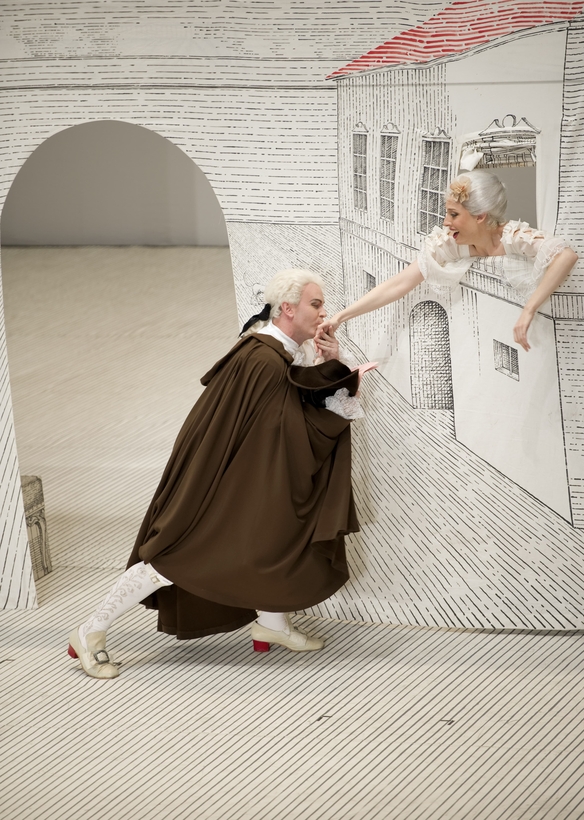Now, here’s a unicorn for you: a production of Il Barbiere di Siviglia a half-century old, Italianate and balletic, still as fresh as on its first night. And to think it originated deep in the Cold War, behind the Wall in East Berlin. The director, long deceased, was Ruth Berghaus, a Marxist and torch-bearing Brechtian who started out as a choreographer. The sets and costumes are by the theatrical polymath Achim Freyer, his first for an opera. Now well into his 80s, Freyer is still very much with us, and best known for his later head trips on a Promethean scale.
As seen last May at the sold-out Staatsoper Unter den Linden, abuzz with Berliners of all ages, this production of Rossini’s indestructible trifle unfolds in a big white box. Scene to scene, only the odd pencil sketch on muslin tells us where in Seville we are. The players pop like paper dolls, smart in silver-sequined snow-white satin or basic-black broadcloth or in brocades in hues stolen from a peacock, all gamboling through their intrigues like stars of the commedia dell’arte.
Rossini’s indestructible trifle unfolds in a big white box.
The enchantment begins at dawn, with the serenade of the disguised Count Almaviva beneath the window of the shut-in Rosina. A band of early risers assists—motley, a mite disheveled, like windup toys hoping for a tip. They depart, and in bounces Figaro, here in Arlecchino’s classic whites and leather mask. In his entrance aria, the barber with a finger in every Sevillian pie rattles off thumbnails of his citywide clientele, usually playacting each type, but not this time. Instead, he dances up to the prompter’s box, plants himself on it, and delivers his spiel straight into the house—telling, not showing, yet the public is in the palm of his hand.
By contrast, Rosina’s introductory self-portrait of an aria whizzes by in a flurry of ribbons, spiraling to the climactic reveal of a thigh as our heroine slips a secret note under her garter, and all that busyness is perfect, too. In short, here is theater to sharpen all the senses. The lilt of a phrase, a toss of the head, rippling light on a pair of white satin knee breeches—detail upon sparkling detail bears witness to the genius of the material and the felicity of the production team.
In a personal note written to me after the show, Freyer expressed his pleasure at the continuing appeal not only of his Barber of Seville but of a handful of his other vintage projects, all still in repertory on German stages. “Good art remains both timely and timeless,” he said. “It shouldn’t always be destroyed too soon.” Amen to that. —Matthew Gurewitsch

